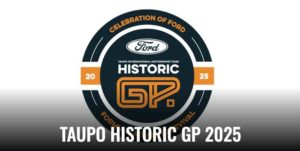“Ford Escort RS1600 – The Potent Mix”. This was how Ford’s advertising campaign announced the Escort RS1600 to the world in early 1970. A combination of Escort Twin Cam chassis and running gear allied with Ford’s newly developed Cosworth sixteen-valve twin cam BDA (Belt Drive Type A) engine unit. The announcement heralded the birth of what was to become, along with its Mk11 descendant the RS1800, arguably the most successful rally car of the 1970′s.
The RS1600′s BDA engine unit was often described as a detuned Formula 2 racing engine. The design was actually based on Cosworth’s very successful Formula 2 race unit, the FVA (Four Valve Type A). In truth, the two units shared only the design philosophy of the narrow-angle four valve per cylinder layout, there being no actual common components. Most significantly, the expensive gear driven camshaft arrangement of the FVA was replaced by a toothed belt drive for the BDA. In its basic form as fitted to the RS1600 the BDA produced 115 PS DIN, sufficient to propel the car from 0 to 60 in about 8.5 seconds and provide a top speed of almost 115 m.p.h. Quite a performance for a modest family saloon in the early 1970’s.
Production of the RS1600 began at Ford’s Halewood assembly plant in January 1970 with the first cars going on sale in April/May of that year at a cost of £1447. Initial production cars were essentially re-engined Twin Cam’s and were only available in White. Homologation of the RS1600 into Group 2 was achieved in September 1970 on the basis of one thousand vehicles having been constructed. In fact, the best estimates suggest that only around 1137 RS1600′s were actually produced over the vehicles entire five year production span to the end of 1974. From November 1970 production was transferred to Ford AVO’s (Advanced Vehicle Operations) purpose built assembly line at Aveley, South Okendon where it was joined by a new model, the Escort Mexico. Two additional colours, Sunset Red and Maize Yellow, were also made available at this time with further additions to follow at the end of 1971.
The specification of the RS1600 changed only in detail throughout it’s production life, with one major exception. From October 1972 the original cast iron cylinder block, which was essentially a standard production item, was replaced by a purpose made light alloy component. This item was specifically designed to allow engine capacities of up to two litres, which would enable competition cars to remain fully competitive for many years to come. RS1600 production was at it’s peak throughout 1971 and 1972 with the numbers going into a gradual decline during the following year. Once the RS2000 was introduced in late 1973 very few RS1600′s were sold as road cars. Only a few dozen vehicles are believed to have been manufactured in 1974, with production finally ending in November of that year.
Due to the versatility of the AVO production line, a hole host of performance and cosmetic options became available for the cars including the Clubman Pack (a competition orientated pack including uprated suspension and safety items) and the Custom Pack (a luxury road pack including cloth trimmed interior). Possibly the ultimate was Special Build, introduced in 1972, which allowed many factory fitted performance items. Indeed, it was possibly to have virtually a full group 2 spec. rally car from the factory, although this would have more than doubled the cost of what was already a very expensive Escort.
